IDs
Table of Contents
ID
What is an ID?
ID is short for Identification, and an ID in R2 is a method of assigning numbering schemes to new entities. IDs can be created for several areas of R2, including new:
Customer ID
Contact ID
Product ID
Asset ID
Order ID
Invoice ID
Event ID
Purchase Order ID
Service Work Order ID
And more.
To access IDs, begin by clicking on the Maintenance button from the Launch Pad:
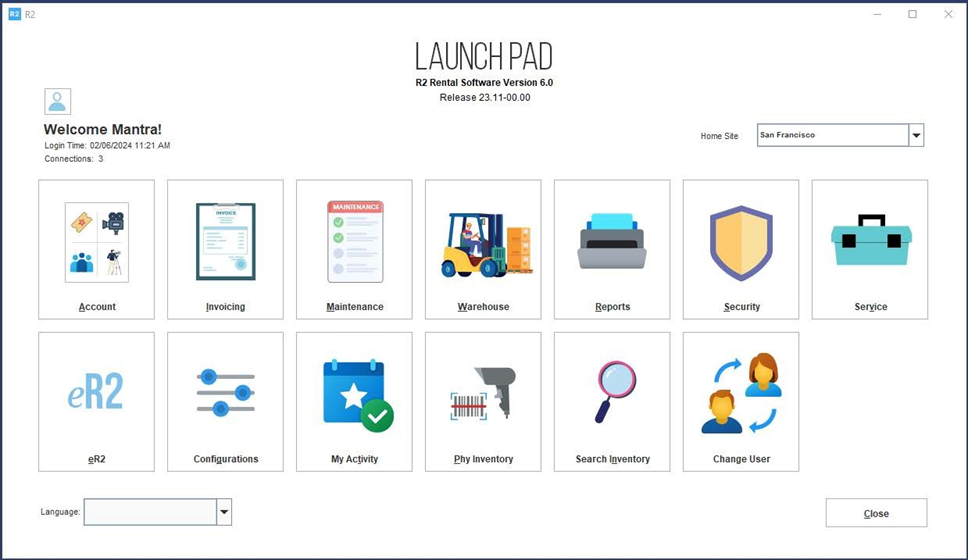
From the Maintenance module, click on the EMPLOYEE tab along the top of the search area, then click on the IDS tab along the left side:
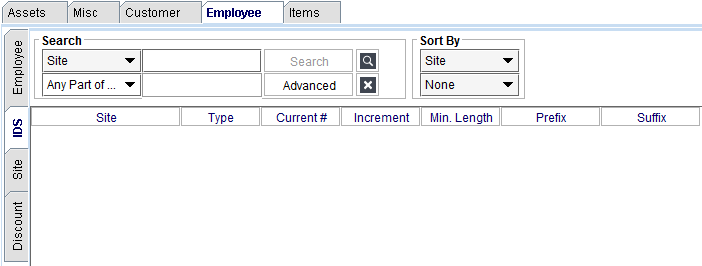
Adding IDs
Click on the Add icon to create a new ID:

The new ID screen will open:
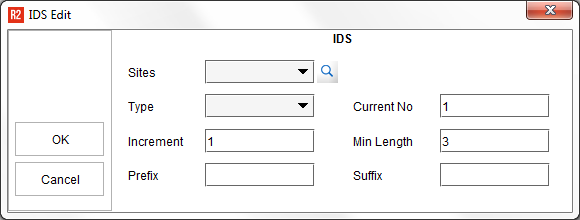
See below for a comprehensive description of each field on the IDs screen.
Field Description
Field | What it does |
Sites | IDs can be setup to apply to all sites or to specific sites. To setup a global ID, then leave the Sites field blank. If the ID should apply to a specific or group of sites, then click on the magnifying glass and double-click on each site that should be included in the ID setup: 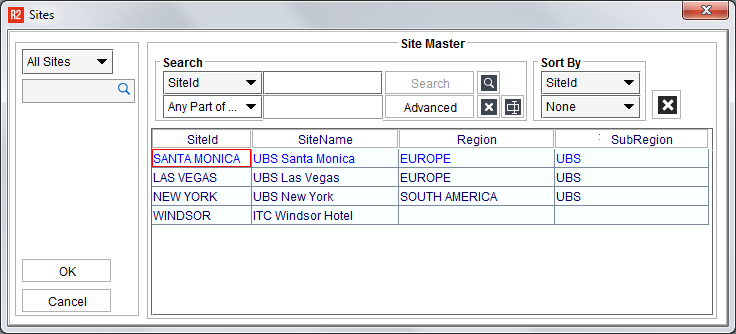 |
Type | The Type is the entity of the ID being created. For example: a Customer has an ID which uniquely identifies them. Some of the most common IDs setup for use in R2 are: Customer, Product (Inventory Item, Part, Misc. Charge, Labor), Asset, Event, Order, Invoice, Purchase Order, Service Work Order |
Current No. | The starting point for the numbering scheme. For example, enter 10001 if that should be the starting point or seed number for incrementing. |
Increment | Typically set to 1, which means that each new record’s ID will be incremented by 1. For example, upon saving Customer 10001, then Customer 10002 will be the next ID. |
Min Length | The minimum length of the Current No. If the Minimum Length has a number larger than the length of the Current No. then R2 will pad the rest with zeros. For example: if the Current No. is 8 and the Min Length is 5 then the first ID created will be “00008” because the minimum length is 5 total digits. |
Prefix | A prefix can be alpha-numeric and often times relates to a site (NY for New York, CA for California) or a type (e.g. ORD for orders, INV for invoices). |
Suffix | A suffix can be alpha-numeric and can also relate to a site (NY for New York, CA for California) or a type (e.g. ORD for orders, INV for invoices). Prefix and Suffix can only be in Upper case. |
Best Practice: many companies want to be able to identify what type of document and what site it was created from just by looking at the order or invoice ID.
Example:
Order IDs: ORD-100001-NY, ORD-100001-CA
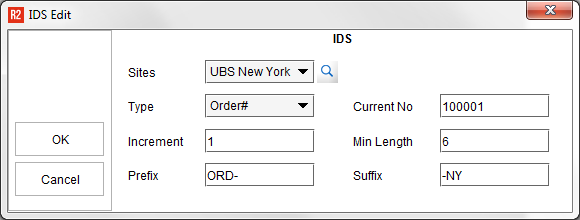
Invoice IDs: INV-100001-NY, INV-100001-CA
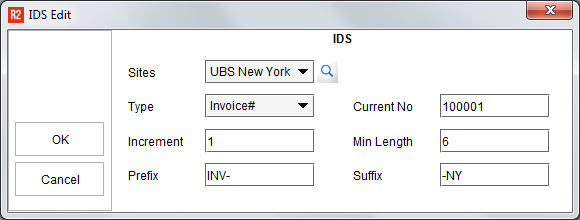
Click on the OK button to save an ID.
Note: new IDs will not change existing IDs, and will only be applied to new entities.
Searching for IDs
When coming back to the IDs setup area, the list of IDs won’t be displayed automatically. To show the IDs, enter a % symbol into the search field and click on the Search button:
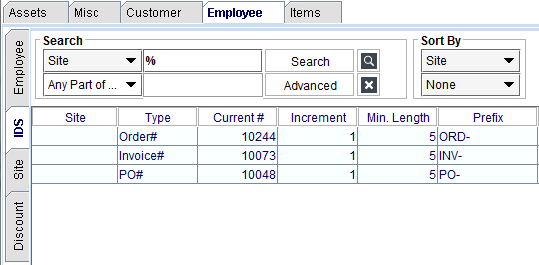
Double-click to edit an ID:
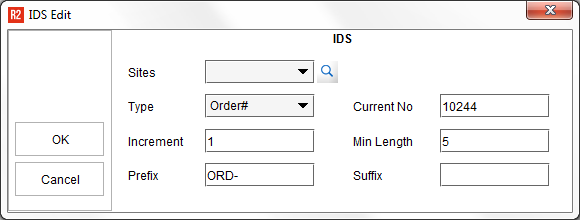
The Current No. field will display the next number for which a given entity will be created. In the example above, the next ID in the sequence will be ORD-10244.
